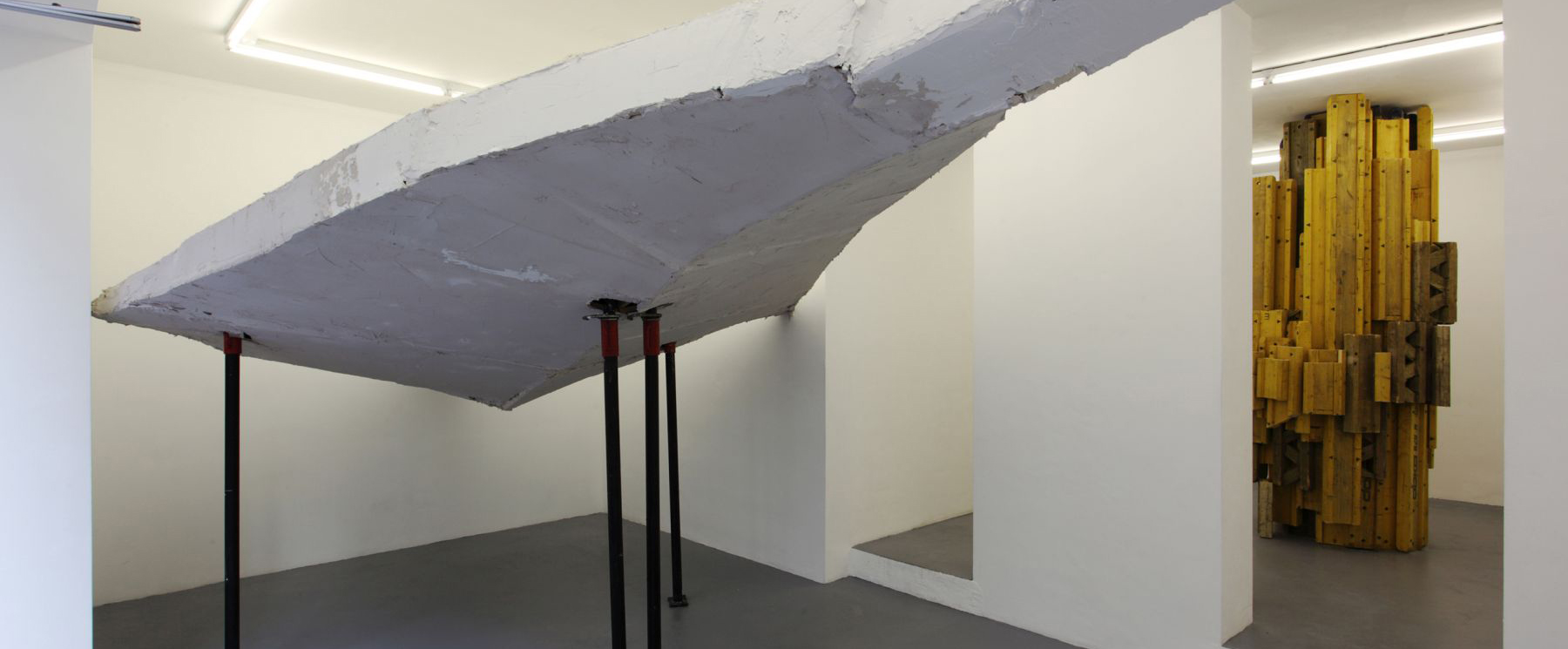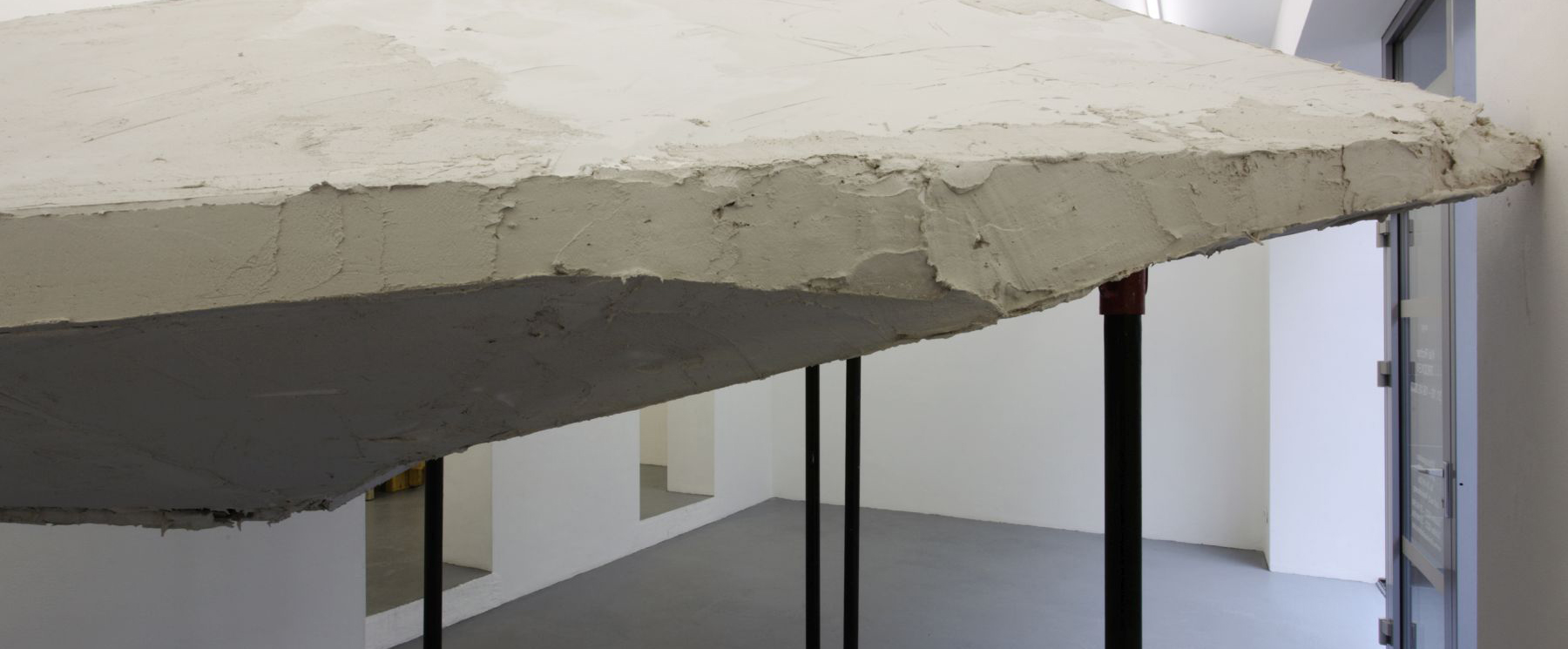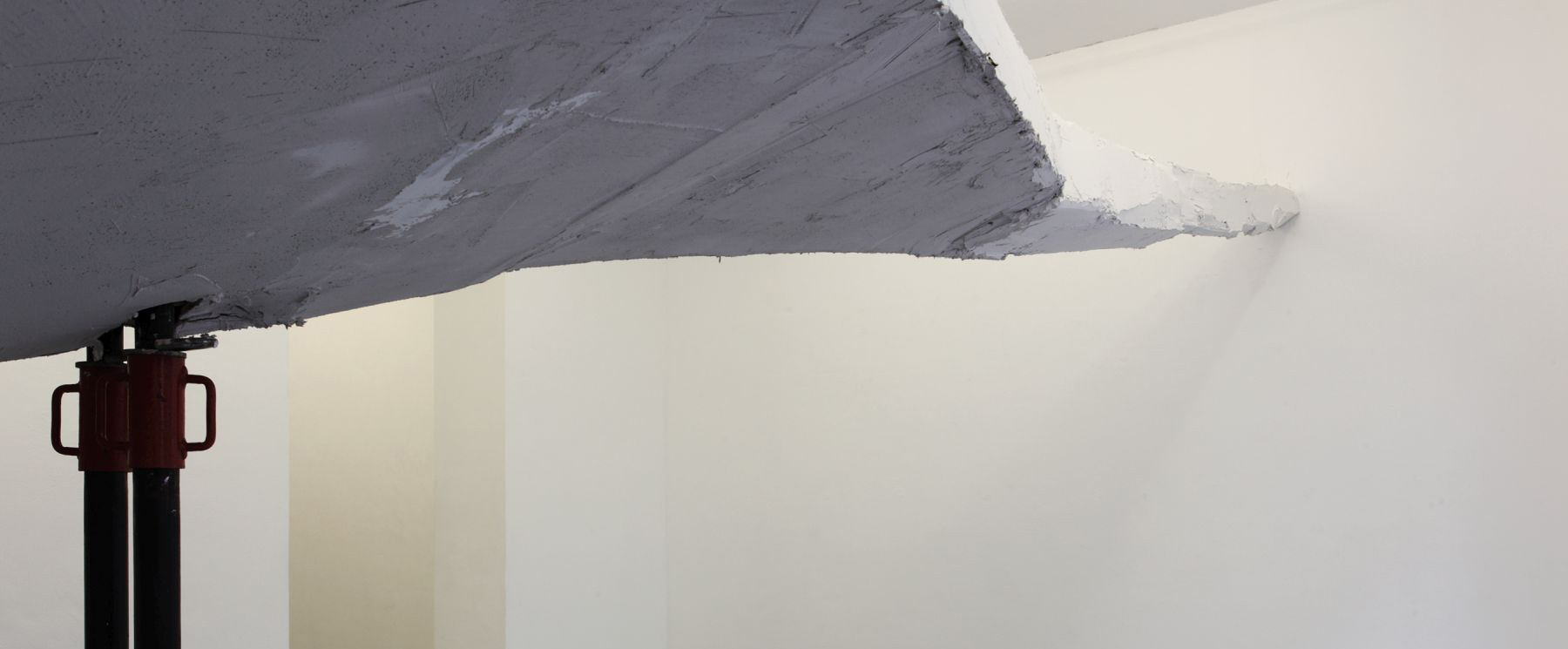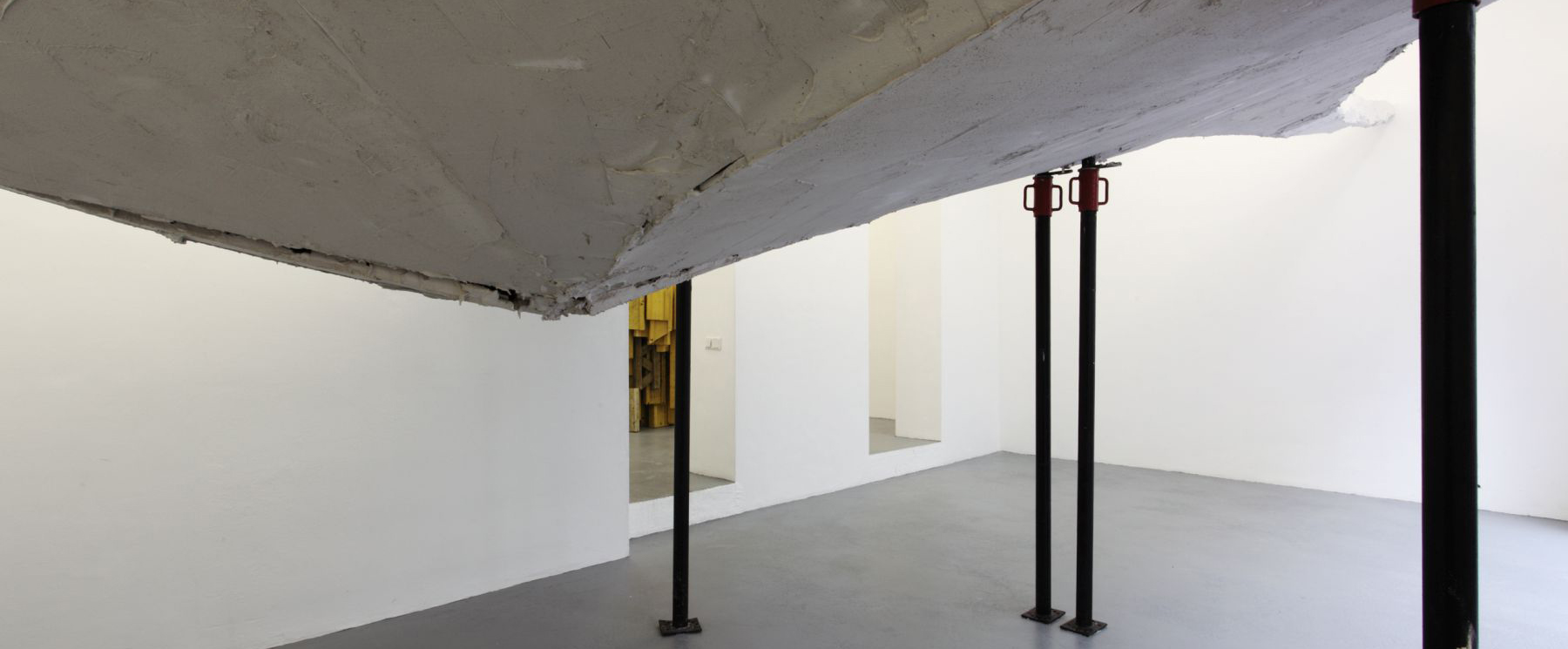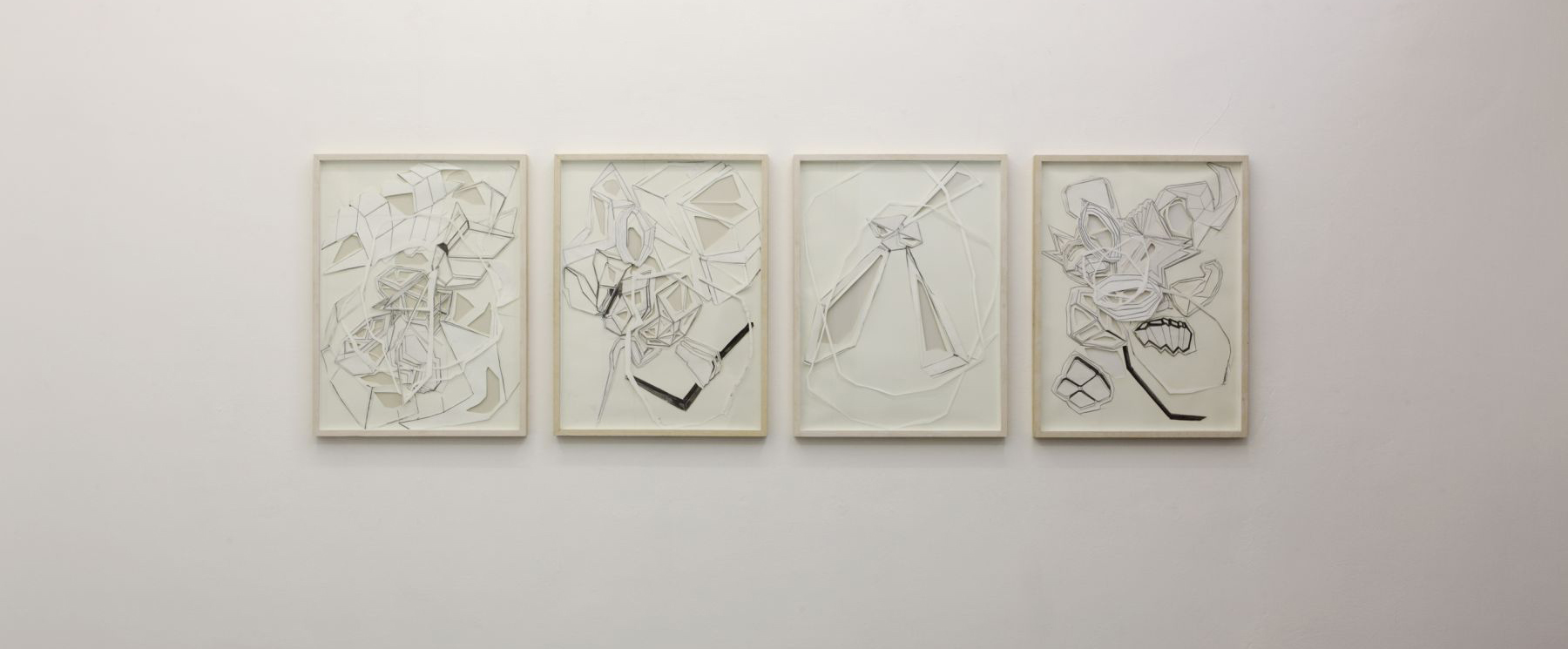Kai Richter Trocken 31.10.2009 - 19.12.2009
We are pleased to announce the first solo exhibition of Kai Richter at our gallery. Kai Richter builds three-dimensional sculptures in connection with and response to the room conditions at hand. He reacts to them, changes them, highlights them—and in doing so, allows us to experience them as rooms in new and different ways.
One of the oddities of art history’s terminology is that the word ›constructions‹ usually implies intellectual planning and not the processes of assembly themselves which are material, physical, and sensual actions—such as we find in the sculptural work of Kai Richter. Richter constructs his works in the literal sense of the word (Lat. construere = to build, erect). In doing this, he works freely with the specific characteristics of his materials and the peculiarities of the exhibition room and does not concern himself with planning. Architecture is the paradigm of constructing. To a certain extent this applies to Kai Richter as well. What constructing really means is better studied at construction sites than after the buildings themselves are finished. What the artist admires as the ›timeless beauty‹ of building site construction – from which he also learned a lot for his own artistic creations – is the pragmatic use of tools and materials, but above all the honesty and clarity in treating the totally individualistic plastic vocabulary revealed there.
The aesthetic attraction of Richter’s works is not selfserving. It arises incidentally and comes about as a result of the often brittle and awkward materials whose treatment is free and open to improvisation. A work such as »Doka« which gives you the feeling of a free, contemporary etude on the age-old theme of ›bundled columns‹ already indicates in its title the basic material that it uses – the yellow-colored concrete form supports made by the Austrian Doka Company. As a plastic form, »Doka« stretches from the floor to the ceiling, supporting the room metaphorically instead of tectonically, thus laconically bringing up the subject of the relationship between sculpture and architecture, form and space.
What continues to surprise us about Richter’s work is how much poetry, humor and lightness he suffuses into his prosaic ingredients – the construction wood, scaffolding poles, and plasterboards. Like a jazz musician who strictly adheres to the harmonic sequences of a melody while transporting them into improvisational lightness, Richter treats the plastic elementary themes of volume and mass, gravity and statics as well as the dialectics of stress and support. With Kai Richter there are no finelychiseled form constructions built to last an eternity, but rather generous, open gestures, a clear grasp of the room situation and the corresponding sculptural reaction to it. This conception of sculpture draws its very own strength from the fact that the sensitivity, spatial feeling and sensuality of the materials merge together in its plastic weightiness.
